Peking (Chinese) cabbage or Peking lettuce spread from the Far East, where it has long been grown throughout the region.
Features of culture
Beijing cabbage forms a loose, light green, slightly elongated head. The leaves are delicate, slightly ruffled with a well-developed central vein, which, however, is also soft and edible.
Pekinka does not tolerate transplantation well, so it is often grown by direct sowing in the ground. The culture is cold-resistant and grows well in cool summers. Seeds germinate at a temperature of 4-5°C, but germinate unevenly. At 17-20°C, seedlings are more friendly. If the temperature in a greenhouse with seedlings is above 25°C, then the seedlings die.
Mature cabbage can withstand frosts down to -4°C without visible problems. The optimal temperature for growth and formation of a head of cabbage is 17-20°C. With prolonged heat above 24°C or prolonged cold weather of 13°C and below, the Pekina forms an arrow and does not form a head of cabbage.
With a long day, it forms an arrow and does not produce a crop, but it tolerates slight shading. Therefore, to obtain a good harvest, Chinese cabbage is grown in the shade of trees or artificially shaded with dark material, shortening daylight hours. Chinese cabbage can be stored for no more than 1-1.5 months.
Varieties of Chinese cabbage
There are early, mid and late varieties and, of course, there are hybrids.
Early varieties
Ripening time is 40-50 days from germination. Used for fresh consumption. Some especially shelf-stable varieties can be stored in the refrigerator for 2-2.5 weeks.
Vesnyanka: It is one of the earliest types of vegetables. From the moment the sprouts appear on the surface until the first ears are harvested, 35 days pass. There is no fluff on the surface of the leaves. The vein running through the center is tender and juicy. Early ripening has good resistance to shoots.Kale is used to prepare salads and decorate dishes.
TSHA 2: Fruiting begins 35–50 days after the seedlings break through to the surface. The head is loose, with many voids. The fruits weigh 500 g. TSHA 2 is endowed with bolting resistance.
Cha-Cha: A variety of hybrid origin. When using the seedless growing method, the heads of cabbage are harvested 50 days after germination. The leaves are tender, bright green. Chinese cabbage is used to make salads.
Richie F1: It is one of the earliest hybrids. The heads of cabbage are dense and large. The average weight of the fetus is 2.5 kg. During crossing, the species was endowed with high immunity to the most dangerous disease of the crop - mucous bacteriosis.
Mid-season varieties
Ripening period is 55-80 days. Used fresh and for short-term storage.
F1 slides: ToEyebrows with a dense structure weigh 2.5 kg. The main advantages are resistance to cracking and long shelf life. The fruits are used for processing.
Bilko F1: Ghybrid, the growing season lasts from 60 to 65 days. The shape of the head of cabbage is barrel-shaped, the leaf blades are bubbly and not pubescent. The weight of the fruit when grown in the worst conditions is 1.2 kg, in the best – 1.8 kg. Thanks to their dense structure, the heads of cabbage can be stored for six months. The variety is endowed with good immunity to clubroot and powdery mildew.
Brockken F1: Withort, which breeders have endowed with resistance to flowering. Heads of cabbage with a dense structure can be stored for a long time.
Late varieties
In the north-west and in the middle zone, this is not possible every year, since during the period of cabbage formation the weather is usually hot and the cabbage begins to bloom. The ripening period is more than 90 days. It is stored from 3 to 6 months.
Monument: Vhigh-yielding variety.The fruits are cut 70 days after the sprouts appear. The heads of cabbage are dense and large. Fruit weight – 3.5 kg.
Autumn beauty: Ghybrid, intended for cultivation in the second half of summer. The fruit is elongated, medium dense. The leaves are not completely closed. The core is yellow. Weight – 1.6–2.4 kg.
Wineglass: Heads of cabbage mature 70 days after germination. The elliptical-shaped fruits consist of green-yellow leaf blades. Heads of cabbage weigh 2 kg.
Chinese cabbage grows well in any climate, so there are no special zoned varieties. Seeds can be brought from another climate zone and grown in your region.
According to the color of the leaves, varieties and hybrids are light and dark green, as well as red.
For home gardening, it is better to choose hybrids, since they are resistant to flowering and set a head of cabbage in any weather.
Landing place
It is recommended to grow Chinese cabbage in fertile soils with a high humus content. It grows best on soils where manure has been applied in the fall. Peking cabbage is a little more finicky than cabbage: on poor soils it may not set heads, forming a large number of leaves.
In the first half of summer, cabbage is planted in the shade of trees or buildings so that it is not in direct sun all day. This is necessary to prevent the formation of flower arrows instead of heads of cabbage.
In the second half of summer, pekinka can also be planted in open areas, since the days are no longer so long.
Try to plant Chinese cabbage after legumes, onions, carrots, green manure, cucumbers, and potatoes. Bad predecessors are cruciferous crops: all types of cabbage, turnips, radishes, radishes.
Seedless growing method
The crop does not tolerate transplantation well, so it is usually grown by direct sowing into the ground. The sowing period is from the beginning of April (if the soil has thawed) until June 10. To obtain a continuous harvest, cabbage is sown at intervals of 7-10 days.
The second period is from mid-July to August 10. In the second half of summer, late varieties can also be grown in the central region, since they will have time to produce a harvest before the onset of cold weather.
When grown in open ground, pekinka is sown quite often with gradual thinning for use as food (its leaves can be used without waiting for the head to set). Sow in furrows at a distance of 10 cm from each other and a row spacing of 30-40 cm.
The furrows are pre-watered: for early spring sowing with warm water, for summer sowing with water from a well. When seedlings appear, they are gradually thinned out. By the time the heads form, the distance between plants should be at least 30 cm.
You can also grow cabbage in holes without seedlings. They are made at a distance of 35-40 cm from each other and 50 cm between rows. If sown in early spring, then boiling water is poured into the hole to speed up seed germination.
Add 0.5 cups of ash or 3 tbsp to each hole. l. dolomite flour (to avoid clubroot) and 1 tbsp. l. nitrogen fertilizer (urea, ammonium nitrate).
If ash is not used, then in addition to nitrogen fertilizers add 1 tbsp. l superphosphate and 0.5 tbsp. l. potassium sulfate. All fertilizers must be mixed with the soil.
Sowing is carried out directly into the holes, 2-3 seeds each, sprinkled with 2-3 cm of soil. The crops are not watered. If the weather is cold, to speed up germination, cover the bed with film or any covering material.
- At a temperature of 4-8°C, seeds germinate in 10-12 days
- At a temperature of 9-15°C - in a week
- If it is above 15°C, then seedlings appear in 3-4 days.
Leave one plant in each hole, cutting off the rest at the root.
If there are no night frosts, the seedlings are not covered with anything; on frosty nights they are covered with covering material or mulched with hay. But on sunny days, the insulation must be removed, since the Beijing overheats and dies.
Growing Pekinka through seedlings
Chinese cabbage is grown in seedlings only in spring. In summer it is better to sow directly into open beds. Since the crop does not tolerate transplantation well, and the seedlings die at temperatures above 25°C, seedlings are not grown in a greenhouse (in the ground). To obtain it, separate containers are used, in each of which only one plant is planted.
Soil preparation
At growing seedlings use special soil for cabbage or, if possible, prepare it yourself. To do this, mix peat and turf soil in equal proportions. Then it is disinfected by pouring a hot burgundy solution of potassium permanganate. After cooling the soil, fertilizers are added to it: 2/3 cup of ash and 1 tbsp are added to a bucket of soil mixture. l. complex fertilizer (Agricola, Intermag). The soil must be neutral or slightly alkaline.
Sowing seeds
Sow 2-3 seeds in each pot, after watering the soil with cold water. When spilled with warm water, and even when kept in a warm room or greenhouse, Chinese cabbage initially produces flower shoots; later it will not set a head of cabbage even under favorable conditions. The seeds are sprinkled with 2-3 cm of soil. The soil is slightly moistened with a spray bottle.
Seedling care
After germination, one plant is left in each container.Seedlings are grown at a temperature of 15-20°C during the day and at least 10°C at night. The seedlings are shaded from the bright spring sun. Watering is carried out as the soil dries, usually once every 2-4 days. Water moderately so that there is no stagnation of water, otherwise a “black leg” will appear.
At appearance of "black leg"“All containers are spilled with a cold, bright pink solution of potassium permanganate. Dead plants are removed.
During the seedling period, the Peking plant is fed once with a complex fertilizer containing a large amount of nitrogen. - Agricola, Baby, Strong.
The timing of planting seedlings of early varieties is 15-20 days after germination, medium and late varieties are 20-30 days. By the time of planting, cabbage should have 4-6 well-developed true leaves. It is advisable that the roots do not entwine the earthen ball, otherwise the Peking plant will have difficulty taking root and some of the seedlings will die. If the roots have already entwined the ball, then first add fresh soil to the container so that the roots continue to develop further, and only after 3-4 days the cabbage is planted in the ground.
If it is impossible to add soil, plant it as is, without cutting off the roots. In this case, the culture takes root very difficult.
Planting seedlings in open ground
Planting of seedlings is carried out at sunset or any time in cloudy weather. Planted only by transshipment. The holes are made at a distance of 30-40 cm from each other. Add 0.5 cups of ash or 2 tbsp. l. calcium nitrate. The pot is filled with water, and when it is absorbed, the plant is removed along with a lump of earth, being careful not to damage the roots. The seedlings are not buried; the roots are covered with soil and watered abundantly. The next day, do another abundant watering.
After planting the seedlings, shade it from the bright sun for several days. Without shading, plants get severely burned and die.
If the crop does not take root well, then the roots have been damaged, and it is fed with the root formation stimulator Kornevin. Additionally, the leaves can be sprayed with Aminosol. It is both a nitrogen fertilizer and a growth stimulator.
If the seedlings are frail and overgrown, then the container is filled with Aminosol solution before planting. This increases the survival rate of plants by 1.5 times. But, despite all efforts, some specimens will still die. You need to remember this and grow a little more seedlings to replace the fallen plants.
Pekinka takes 10-15 days to take root, so the survival period is added to the maturation period. The appearance of a new leaf indicates that the seedlings have taken root.
Caring for Chinese cabbage
Immediately after planting the seedlings or the appearance of 2 true leaves when growing without seedlings, the soil under the crop is covered with spnbond to protect it from the cruciferous flea beetle. It is undesirable to mulch the ground with hay for the same purpose, since it generates too much heat and the pekin can go into the arrow. Although, when growing hybrids, this option for protection against pests is also suitable.
Watering
Water the crop with cold water abundantly and often. In the north, in warm, dry weather, once every 2-3 days, in rainy weather - once a week. If the rains are prolonged and wet the soil well, then watering is not required.
In the south, in extreme heat, water daily. They water every day even during heavy rainfalls, since they do not wet the soil. In rainy weather, rely on soil moisture. When weeding a plot, they look at the roots of the weeds: if they are wet and the soil is difficult to shake off, then watering is not required. But in any case, in the south, in warm and humid weather, cabbage is watered once a week.
Unlike white cabbage, the crop requires a lot of moisture throughout the growing season, including before harvesting.
Loosening
When the soil dries out after watering, the plot is loosened, since the crop cannot tolerate excessive waterlogging and lack of oxygen in the soil and becomes susceptible to rot. Loosen no deeper than 2-4 cm, so as not to touch the roots. If the root system is damaged during loosening, the plant dies or stops growing for a long time.
You cannot hill up Chinese cabbage.
Top dressing
Top dressing depends on the growing season and the humus content in the soil.
Early varieties Chinese cabbage when grown on fertilized soil is not fed. The only thing they may need in such conditions is soil deoxidation. 20 days after germination or 15 days after planting seedlings on acidic soils, add an infusion of ash (1 glass per bucket of water) or calcium nitrate (1 tablespoon per 10 liters of water). On neutral and alkaline soils this is not required either.
If the soil is poor, then do one fertilizing per season. They are fed either with infusion of manure or with complex fertilizers containing microelements (nitrophoska, Malyshok, Agricola).
However, if the Peking cabbage stubbornly does not set a head of cabbage, but only produces leaves, then add an infusion of ash or a special complex fertilizer for cabbage with microelements (Omu, Aquarin).
Mid-season varieties feed 1-2 times. For soil cultivation, 20-25 days after germination, an infusion of manure or urea with an infusion of ash is added. However, on poor soils, 15 days after the first application of fertilizers, you can feed them again with nitrophoska. But fertilizing should not be later than 15 days before harvest.
When growing seedlings, the first fertilizing is done as soon as the cabbage takes root.Add urea or ammophoska. The second feeding is carried out 20 days after the first, using an infusion of ash (1 glass/10 l of water) and 1 tbsp urea. l per 10 l. It is unacceptable to increase the dose of urea, since nitrates accumulate in the leaves.
Late varieties feed 3 times, regardless of the growing method. The first feeding is done 15 days after emergence or 5-7 days after complete survival of seedlings. Water the roots with infusion of manure (1 cup/bucket).
The second feeding is done 20 days after the first. An infusion of ash and nitrogen fertilizers are added: urea, ammonium nitrate or an infusion of weeds (not manure!). In the absence of ash, use any fertilizer with microelements (Agricola, Intermag vegetable garden, Uniflor-micro, etc.). If it is necessary to deoxidize the soil, but there is no ash, then add 1 tbsp calcium nitrate. l. for 10 liters of water.
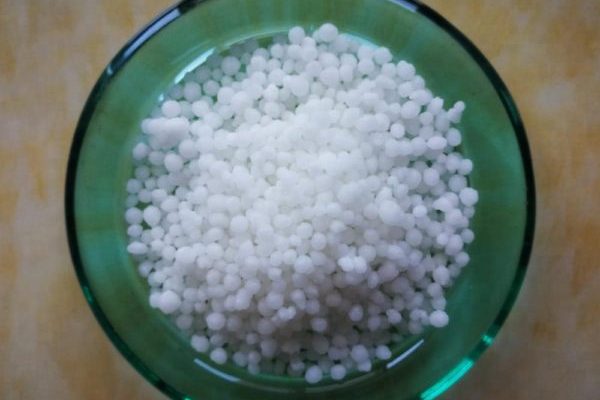
Saltpeter
On acidic soils, after 14 days the soil is deoxidized by watering with lime milk: 3/4 cup of dolomite flour per bucket of water. This is not fertilizing and is carried out on acidic soils, regardless of the application of fertilizers.
The third fertilizing is done 20 days before harvesting. Add nitrophoska, 1 tbsp. l. with a slide on a bucket. Do not apply pure nitrogen fertilizers, manure or weed infusions, as nitrates accumulate in the leaves.
Growing Chinese cabbage in a greenhouse
Pekinka is often grown in greenhouses in the Non-Black Earth Region when the crop is sown in mid-August. This method is not suitable for southern regions. Cabbage is planted as a compactor in a greenhouse with indeterminate varieties of tomatoes.
At this time, the days are already short, it is not so hot, and since tomatoes at this time tolerate cool nights well, the greenhouse practically does not close.In addition, the lower leaves and lower fruits of tomatoes have long been removed, so Chinese cabbage will grow very comfortably.
Only hybrids are suitable for greenhouse cultivation, since they are not susceptible to flowering. It is better to sow early and middle hybrids, since late ones do not always have time to set a head of cabbage before the cold weather, although it does not happen from year to year.
Peking cabbage is sown between tomatoes in furrows at a distance of 10 cm from each other. The seedlings are thinned out as they grow, leaving a distance of 30-40 cm between plants. Water regularly and abundantly. Watering is carried out once every 2-3 days, at the same time you will have to water the tomatoes to ensure even moisture. Otherwise, the tomatoes will crack due to changes in humidity.
During the season, one fertilizing is carried out with a complete complex fertilizer. They do not feed with manure or weeds, since this also falls on the tomatoes, and as a result they will produce leaves and shoots to the detriment of fruit growth.
The greenhouse is kept open around the clock, however, if the temperature at night is +3-5°C, then only the windows are left. Tomatoes can withstand this temperature without any problems, and in the greenhouse it will still be at least 7°C. If it is very hot in the greenhouse during the day, then the Beijing can be watered by sprinkling.
The heads of cabbage are harvested without waiting for them to interfere with the main crop, and if the tomatoes have already been harvested, then as soon as the heads of cabbage are ready. In a greenhouse, Chinese cabbage can be grown until the first ten days of November, if the temperature at night does not drop below -2-3°C.
Harvesting and storage
Peking varietal is harvested in the summer without waiting for it to completely set. Early summer harvesting is carried out to avoid bolting of varieties. Hybrids are kept in the plot until the heads of cabbage are fully formed.In the summer, cabbage is harvested when ready, thinning the bed and allowing other plants to form. In the fall, the plot is completely cleaned.
They harvest cabbage in dry weather, cutting it off near the ground, or dig it up and pull it out along with the roots. If the heads of cabbage are wet, then they are left to air for several hours, the roots are cut off and stored.
Beijing can be stored for up to 3-5 weeks at 3°C. To remove excess moisture, the heads of cabbage are wrapped in paper. At higher storage temperatures (5-7°C), they are wrapped tightly with cling film. In this state, the vegetable can be stored for up to 12-14 days without losing its taste.
Cabbage from the stalk
Pekinka can be grown from stumps both in the country and on the windowsill in late autumn. The good thing about this method is that you don’t have to bother with the seedlings, some of which will still die during transplantation. The stump takes root much better in a permanent place and produces a good harvest.
The stalk of Chinese cabbage is very small - only 5-6 cm; the buds are located on it, which produce the entire leaf mass of the head of cabbage. Choose a strong, healthy head of cabbage, retreat 6-8 cm from the bottom and cut off the lower part.
The head of cabbage is used for food, and the lower part with the stump is placed in a dish with clean cold water. The width of the dish should be slightly larger than the diameter of the poker. The cabbage should be 1/3 submerged in water. The dish is placed in a cool place without direct sun.
After a day, young leaves begin to hatch on the stump, and after 2 days, roots appear on the lower part. After a week, a few leaves grow, which can be cut and eaten. If the Beijing plant is in a warm place, then instead of leaves it produces a flower arrow. The arrow is immediately removed, then the leaf mass will grow back.
After a week, the roots will grow and the plant can be planted in the garden. They are planted in the ground, sprinkling the roots with 2-3 cm of soil. Do not sprinkle the stump itself, otherwise it will begin to rot and the plant will die. After planting, water thoroughly. Caring for the plant is the same as when growing through seedlings or direct sowing in the ground. This type of cabbage is good to plant as a sealant in a greenhouse for tomatoes.
How to grow Pekinka from stump at home
You can grow cabbage at home by planting a stump in a pot. To do this, use neutral or alkaline soil with a pH of at least 6.5. Garden soil is not suitable for this - it is too acidic and Peking soil will, at best, produce a small amount of small leaves without setting a head.
Ideal for culture is an eastern or western window, where the sun does not last all day. If the room is hot, then the plants are taken out to the balcony. Water every other day or two; the pot must have drainage holes. When water stagnates, the roots rot very quickly and the cabbage dies.
The Beijing dog has one bad feature - it goes into the arrow at temperatures above 23-25°C and below 13°C. Therefore, when a peduncle appears, it is broken off, and the plants are placed in appropriate temperature conditions to grow leaves. If the sun illuminates the window for more than 12 hours, then the crop is shaded. At home, the head of cabbage turns out to be looser than in the ground.
At the dacha, you can grow Chinese cabbage from a stump if, when harvesting, you do not cut off the entire head of cabbage, but leave the lower part (5-7 cm) standing in the garden bed. The remainder of the stalk is watered, and after a few days it produces new leaves. Then they feed with weed infusion or urea. The care is normal. However, this method is not always successful.
Pests of Chinese cabbage
Cruciferous flea beetle
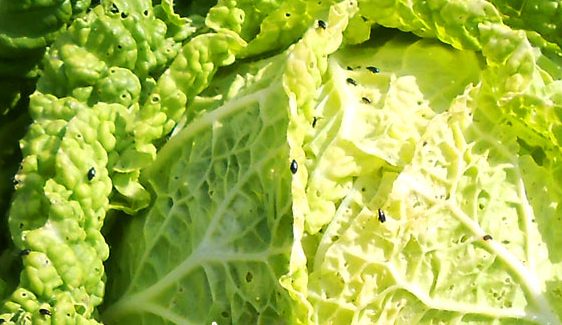
Seedlings transplanted into open ground must be treated with a spray bottle on the 2nd day, and then repeated twice at intervals of 7 days.
If the colony has greatly increased, you need to use “Bi-58” or “Tibazol” - universal chemical preparations of contact and contact-intestinal action.
What to spray against slugs

- vinegar solution (200 ml of vinegar diluted in 10 liters of water);
- infusion of mustard powder (100 g of mustard is poured into 5 liters of boiling water and left for 2 days, then add 10 liters of water and 40 g of laundry soap).
Peking cabbage forks are treated with any of these products from a spray bottle in the evening. Spraying is carried out 2-3 times with a week break.
Advice: To fight slugs It is better to use “Ecokiller” and “Ulicid”. These drugs are harmless to people and pets.
How to fight aphids on cabbage
The best folk remedy for aphids consists of several components:
- ash - 200 g;
- laundry soap - 200 g;
- cinnamon, red and black pepper - 50 g each;
- hot water - 1 l.
The well-mixed composition is added to 9 liters of water and left for 6 hours. The infusion is applied from a spray bottle 2 times with an interval of 3 days in the early morning.
Of the chemical preparations that have proven themselves well: “Iskra”. "Commander" and "Tanrek".
Remedies for cabbage flies (midges)
The cabbage fly is very similar to the regular fly.Lays eggs in the basal part of the stem, from which white legless larvae 8 mm long emerge. The larvae gnaw through the stem and make internal passages in it.
Protect cabbage from flies without the use of chemical insecticides it is possible only by preventing the laying of eggs. To do this, sprinkle the ground around the cabbage with a mixture of naphthalene and sand (1:7) or tobacco dust with lime (1:1) in an amount of about 300 g per square meter. m.
Another method: crushed burdock leaves (2.5 kg) are poured into 8 liters of warm water and allowed to brew for 4 days. Plants are pollinated 3 times, with an interval of a week; the first time - immediately after transplanting the seedlings into open ground.
To destroy flies and larvae, insecticides are used: “Karbofos”. "Iskra" or "Zemlin". Important! Chemicals are used if more than 5 eggs or larvae are found on the plant.
Cabbage diseases
Kila
When the disease occurs, bubbly swellings form on the cabbage roots, the plants wither, turn yellow and die. Clubroot is mainly found on acidic and damp soils.
Liming of acidic soils helps to some extent (at the rate of 300-400 g per 1 sq. m). If a disease is detected, cabbage cannot be planted in the same place for 5 years. Do not grow seedlings in soil taken from garden beds; it is better to take turf soil from places where perennial plants grew.
During the cabbage growing season, nitrogen fertilizers are used: 2 tablespoons of urea and 1 liter of liquid mullein are diluted in 10 liters of water. After fertilizing, the cabbage is hilled.
Mucous bacteriosis
It most often affects cabbage when tying heads. The leaves turn yellow, become slimy, and emit an unpleasant smell of rot. The heads of cabbage fall off before they ripen.
It is necessary to follow agricultural practices and fight the cabbage fly and other insects that spread putrefactive bacteria. During the growing season, cabbage is watered with a solution of potassium permanganate and pollinated with ash.
Downy mildew
This fungal disease affects seedlings, starting with the cotyledon leaves. Small, yellowish, oily spots with a grayish, powdery coating appear on the leaves, as a result of which the plants are stunted in growth. The development of this disease is promoted by high air and soil humidity and watering with cold water. Usually the disease stops after planting diseased seedlings in open ground.
To prevent downy mildew, before sowing, seeds are heated in hot (50°C) water for 20 minutes, followed by rapid cooling in cold water (1-2 minutes).
It is also useful to spray the seedlings with the following solution: dilute a tablespoon of copper sulfate and a tablespoon of liquid soap (preferably tar) in 10 liters of water. The treatment should be repeated 20 days after planting the seedlings in a permanent place.
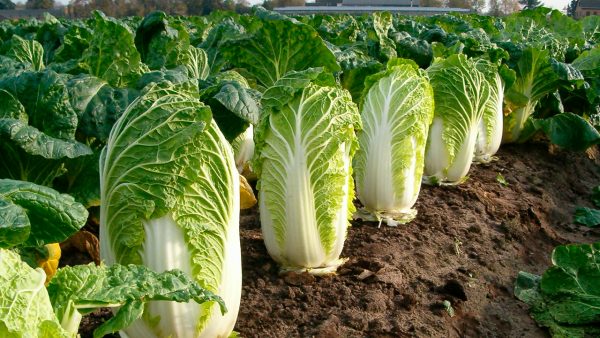
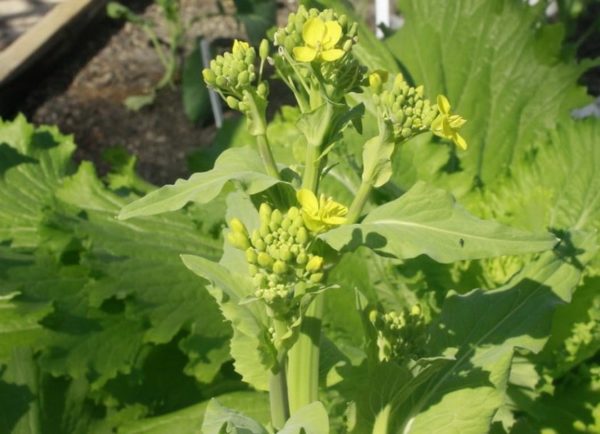
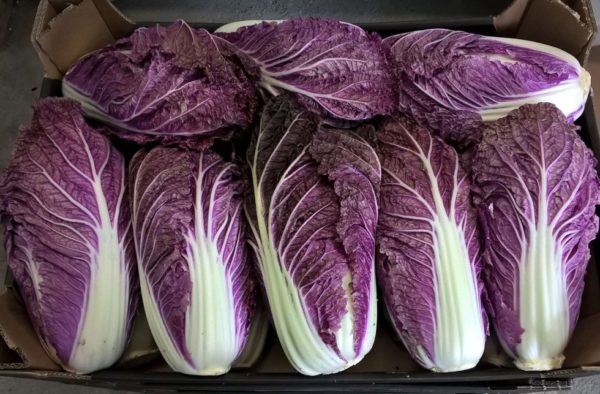
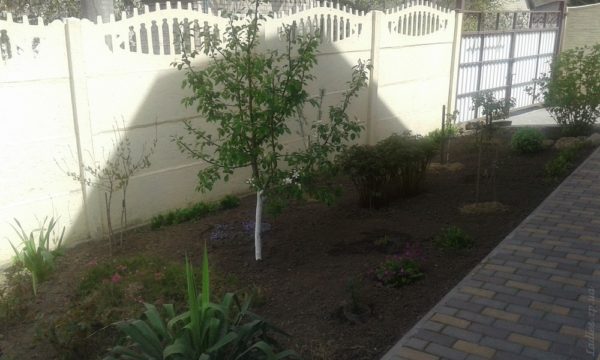

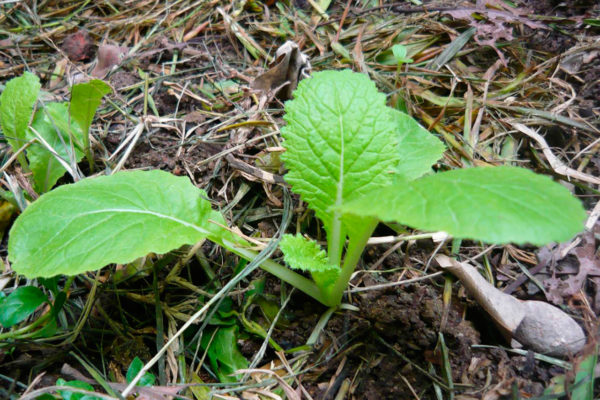
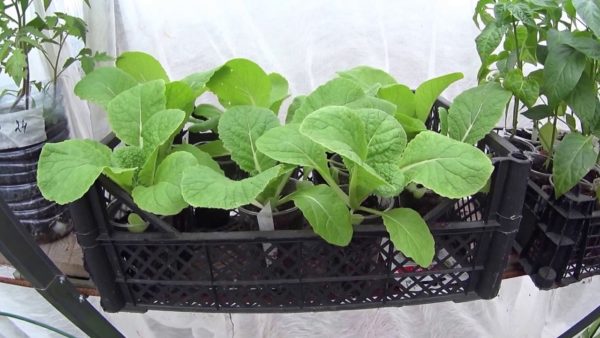
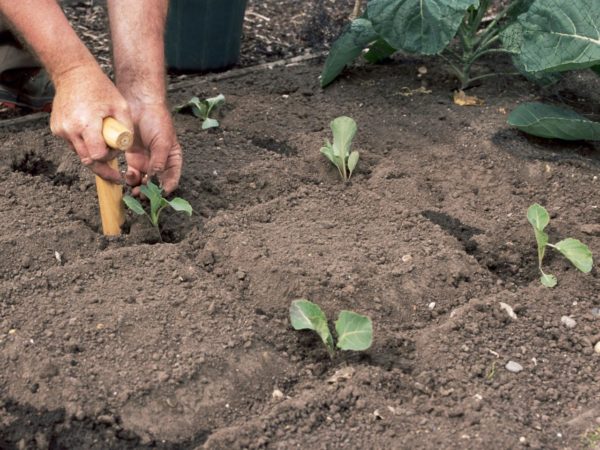
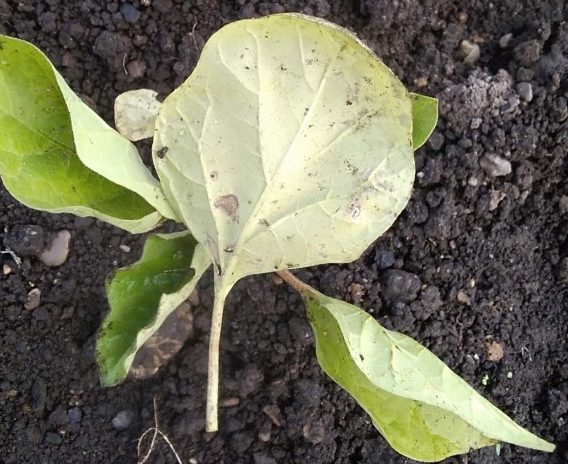
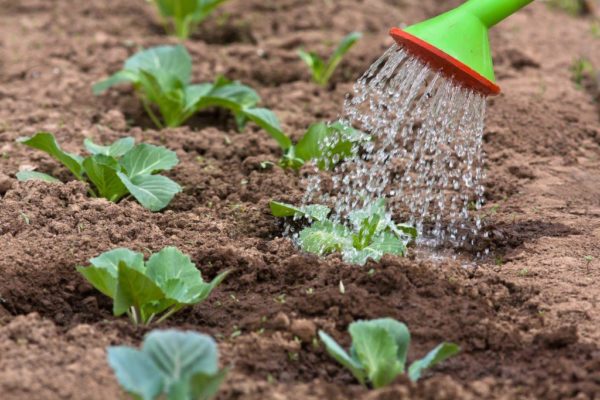
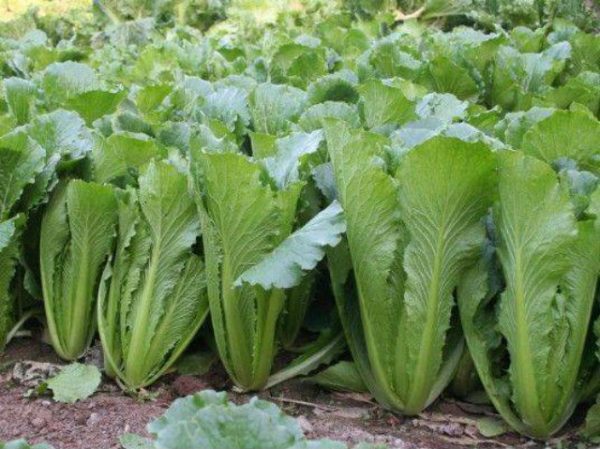
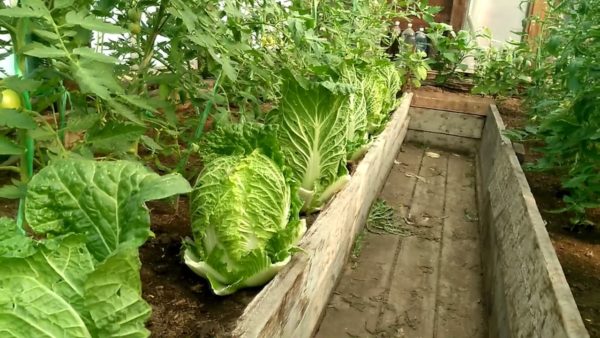
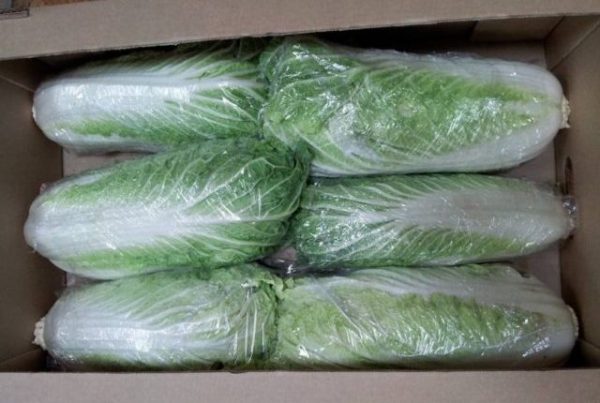

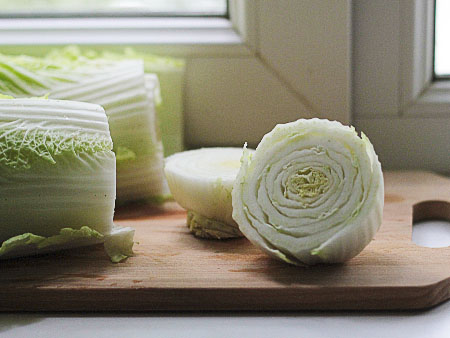
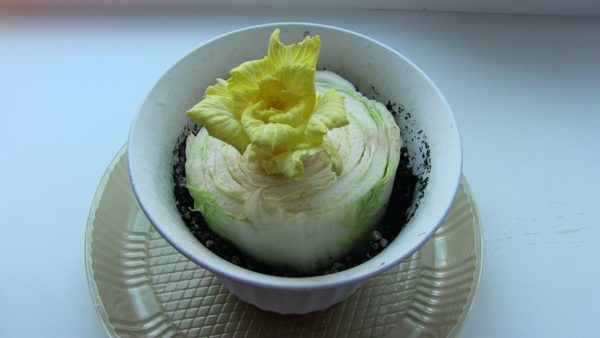
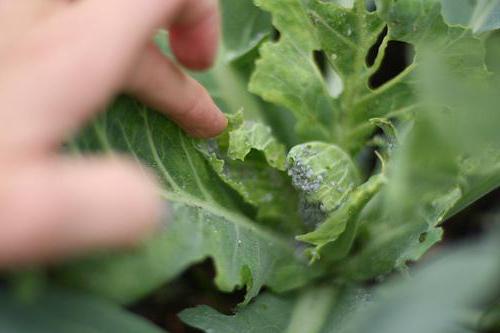
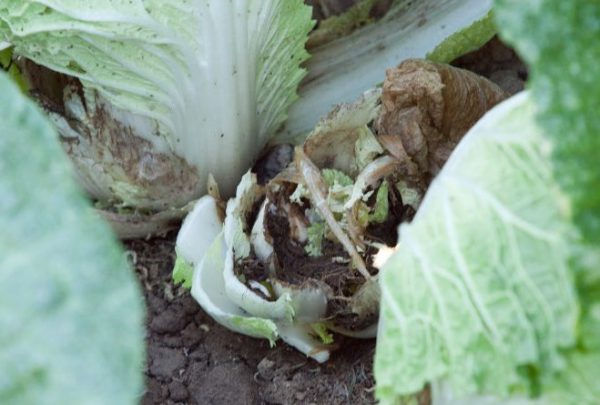
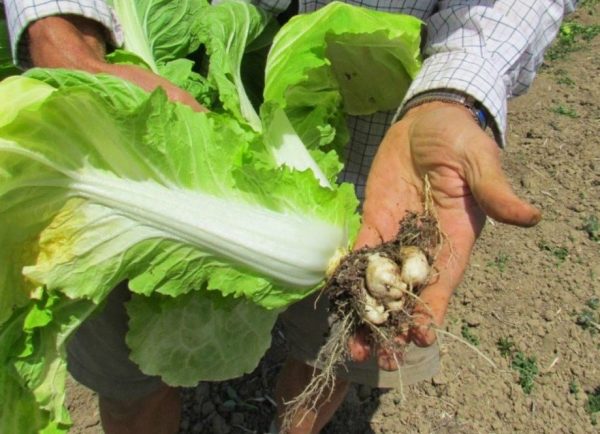
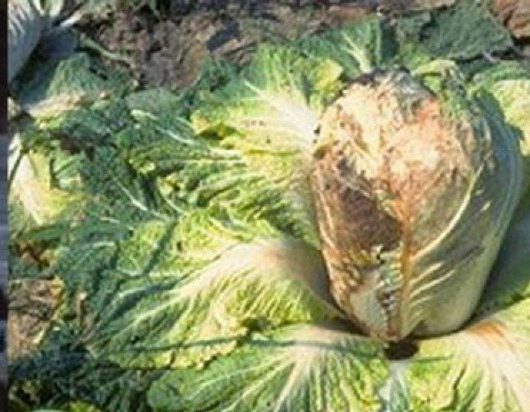
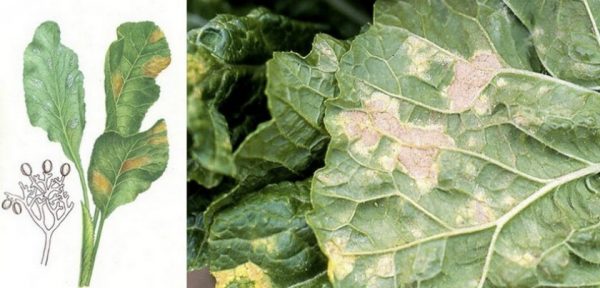

 (6 ratings, average: 4,17 out of 5)
(6 ratings, average: 4,17 out of 5) CUCUMBERS NEVER GET SICK, I'VE BEEN USING ONLY THIS FOR 40 YEARS! I SHARE A SECRET WITH YOU, CUCUMBERS ARE LIKE THE PICTURE!
CUCUMBERS NEVER GET SICK, I'VE BEEN USING ONLY THIS FOR 40 YEARS! I SHARE A SECRET WITH YOU, CUCUMBERS ARE LIKE THE PICTURE! You can dig a bucket of potatoes from each bush. Do you think these are fairy tales? Watch the video
You can dig a bucket of potatoes from each bush. Do you think these are fairy tales? Watch the video
 How our fellow gardeners work in Korea. There is a lot to learn and just fun to watch.
How our fellow gardeners work in Korea. There is a lot to learn and just fun to watch. Eye trainer. The author claims that with daily viewing, vision is restored. They don't charge money for views.
Eye trainer. The author claims that with daily viewing, vision is restored. They don't charge money for views. A 3-ingredient cake recipe in 30 minutes is better than Napoleon. Simple and very tasty.
A 3-ingredient cake recipe in 30 minutes is better than Napoleon. Simple and very tasty. Therapeutic exercises for cervical osteochondrosis. A complete set of exercises.
Therapeutic exercises for cervical osteochondrosis. A complete set of exercises. Which indoor plants match your zodiac sign?
Which indoor plants match your zodiac sign? What about them? Excursion to German dachas.
What about them? Excursion to German dachas.